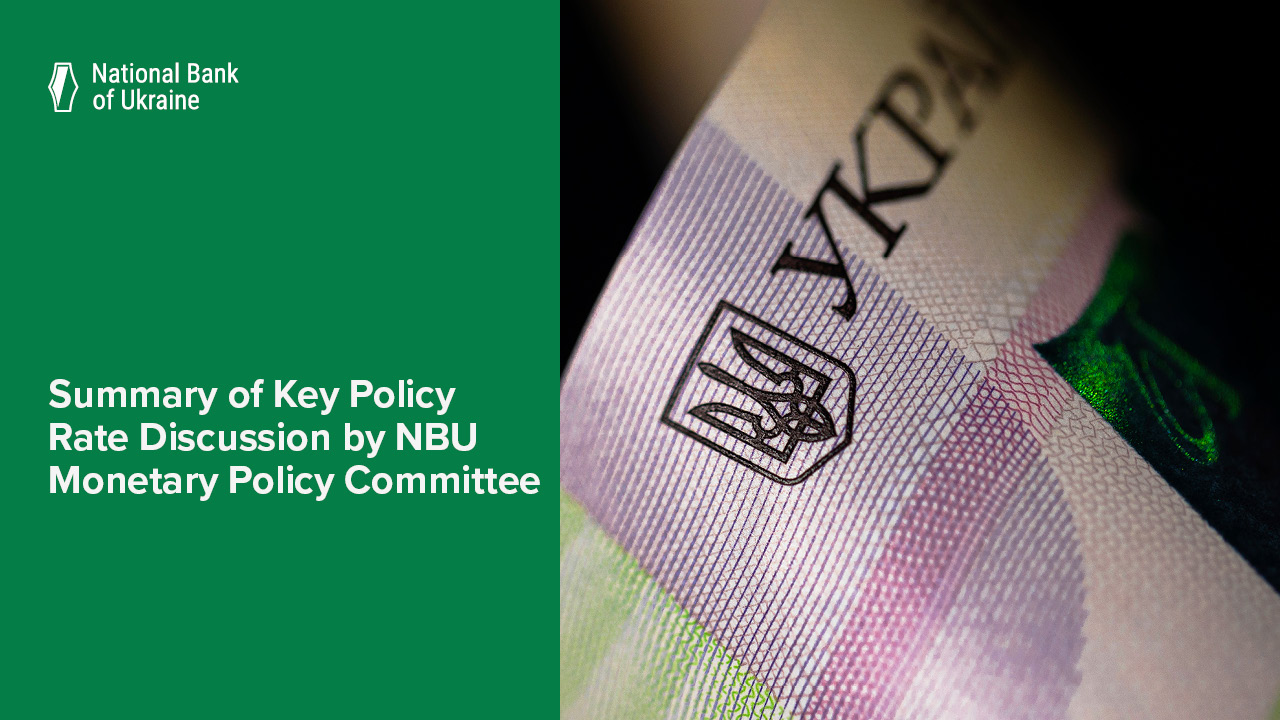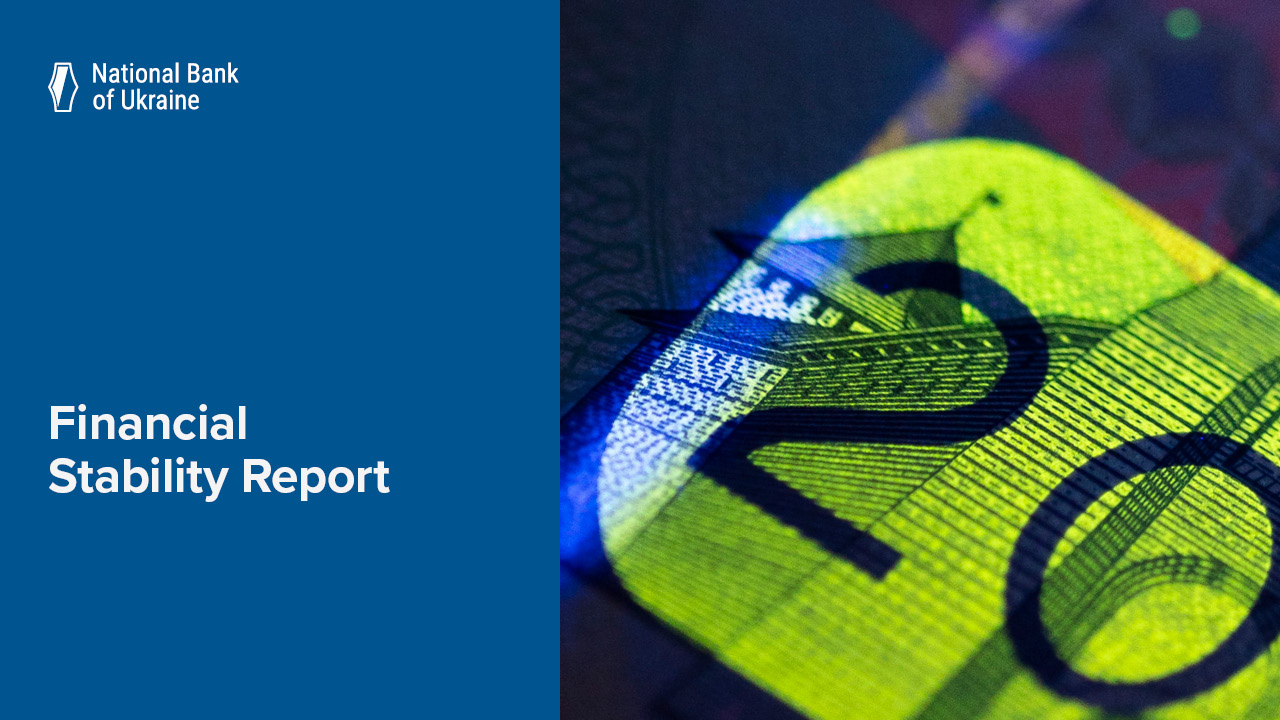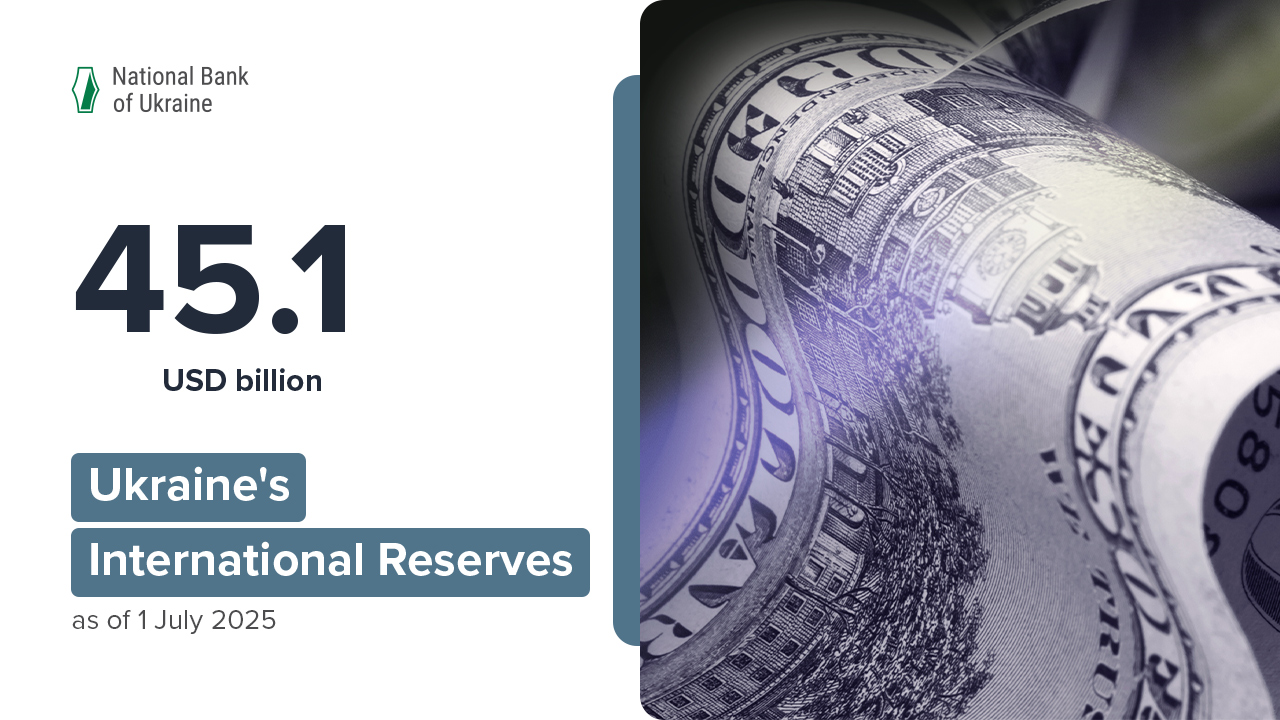Dear colleagues,
I would like to inform you that the Board of the National Bank of Ukraine has decided to raise its key policy rate to 25% per annum. Along with other measures, a significant increase in the key policy rate will help protect households’ income and savings in the hryvnia, raise the attractiveness of hryvnia assets, and ease the pressure on the foreign exchange market. This will enhance the NBU’s capability to maintain the stability of the exchange rate and restrain inflation processes during the war.
Why has the NBU returned to using the key policy rate?
At the start of the large-scale russian military attack on Ukraine, the NBU refrained from taking any key policy rate decisions. This approach was justified. Due to a strong psychological pressure caused by the war, changing the key policy rate would not be sufficient to stabilize expectations and to accumulate and maintain hryvnia assets.
To this end, in the first months, the NBU aimed its monetary policy measures primarily on ensuring uninterrupted functioning of the banking system and payments in the economy. Fixing the exchange rate was supported by FX restrictions imposed to reduce demand for foreign currencies and by the NBU’s interventions to sell foreign currency in order to cover the remaining FX deficit of on the interbank market.
At the same time, the gradual adaptation of Ukraine’s economy and the psychological shock giving way to the economic decision-making logics of businesses and households require changing the approach to monetary policy.
Under such conditions, insufficient yields on hryvnia assets increase the threat that economy dollarization might rise and the financial system might lose respective resources. Depreciation expectations of households and businesses are not stable and are susceptible to war developments, in particular to changes on the frontline and other situational factors. As a result, the NBU has increased its interventions to sell foreign currency. Amounting to around USD 2 billion in March and April, the interventions reached USD 3.4 billion in May. In addition, the difference in the cash market exchange rate and the official one widened in May, which worsened negative effects on the economy.
As a result, risks to macrofinancial stability and economic recovery have risen in the medium term, despite the sufficient international reserves. If yields on hryvnia assets do not rise significantly, international reserves will deplete rapidly on the back of the need to maintain exchange rate stability and imbalances will keep building up in the economy.
What are the current price dynamics?
In April, inflation accelerated to 16.4% yoy. In particular, core inflation rose by 13%. In monthly terms, prices grew by 3.1%.
According to the NBU’s preliminary estimates, inflation continued to grow in May.
As of now, inflation is restrained by:
- a certain recovery in the economic activity
- a gradual setting up of logistics
- an increase in supply from domestic producers and importers
- an excess of agricultural inputs and a relatively low demand for them
- the NBU fixing the official exchange rate and limiting its fluctuations on the interbank market, and the government imposing administrative caps on prices.
The liberation of Ukraine’s northern regions (Kyiv, Chernihiv, and Sumy oblasts) and the Ukrainian army’s resistance against the enemy in southern and eastern regions restrained the deterioration in inflation expectations.
At the same time, the disruption of production and logistics by the war is fueling inflation. High global energy prices also remain a significant inflationary factor, putting pressure on consumer inflation, both directly and indirectly, through higher production costs.
Third, Ukraine is also in part importing global inflation, which has hit a record-high. In particular, the current inflation rate in the United States and euro area countries is over 8%.
How will prices behave in future?
Despite the gradual recovery of the economy, the upward trend in inflation will continue over the coming three months. This could worsen inflation expectations even further, and encourage depositors to convert their hryvnia savings into FX ones.
For this reason the NBU has decided to return to an active interest rate policy to prevent these negative trends.
Why did the NBU raise the key policy rate significantly?
After considering several scenarios, the NBU decided to raise the key policy rate by a whole of 15 pp, to 25% per annum. The NBU believes that a slight increase in the key policy rate wouldn’t have had the desired influence on the financial and economic system.
The first reason for this is that the monetary transmission mechanism has only a limited effect in wartime.
Second, this would have resulted in depositors taking a wait-and-see approach and, investors having weak interest in hryvnia assets.
Third, to revive interest in hryvnia assets, their yields must exceed expected inflation rates.
In this light, a decisive rise in the key policy rate will spur investors’ interest in hryvnia assets, while also easing pressures on international reserves and reining in inflation.
The NBU has also decided to widen the interest corridor for monetary transactions with banks to revive the interbank market. More specifically, from 3 June, the interest rate on refinancing loans will equal the key policy rate plus 2 pp, while that on certificates of deposit will be the key policy rate less 2 pp.
What result does the NBU expect?
The NBU expects that the government and the banks will appropriately respond to the hike in the key policy rate by raising interest rates on domestic government debt securities and deposits. Sufficient yields on such assets will prevent household income and savings from being eroded by inflation, while also making hryvnia assets, including domestic government debt securities, more attractive.
More attractive hryvnia savings will help decrease demand in the cash segment of the FX market. This will prevent the further accumulation of imbalances, ease pressures on Ukraine’s international reserves, and will gradually resolve the issue of multiple exchange rates.
Setting market rates on domestic government debt securities will help increase demand for these assets, while also decrease the need for the NBU’s monetary financing.
The re-imposition of taxes on imports should be an important step in balancing fiscal and monetary policies. On the one hand, this will secure additional revenues for the state budget, while on the other hand it will increase incentives for domestic producers and ease pressure on international reserves.
What will the NBU’s monetary policy stance in future?
The NBU expects that a significant rise in the key policy rate, to 25%, will be sufficient to ease pressures on the FX market, maintain a stable exchange rate, and to stabilize inflation expectations. In future, this will lay the foundations for a monetary easing cycle.
Thank you for your attention!
Glory to Ukraine!







